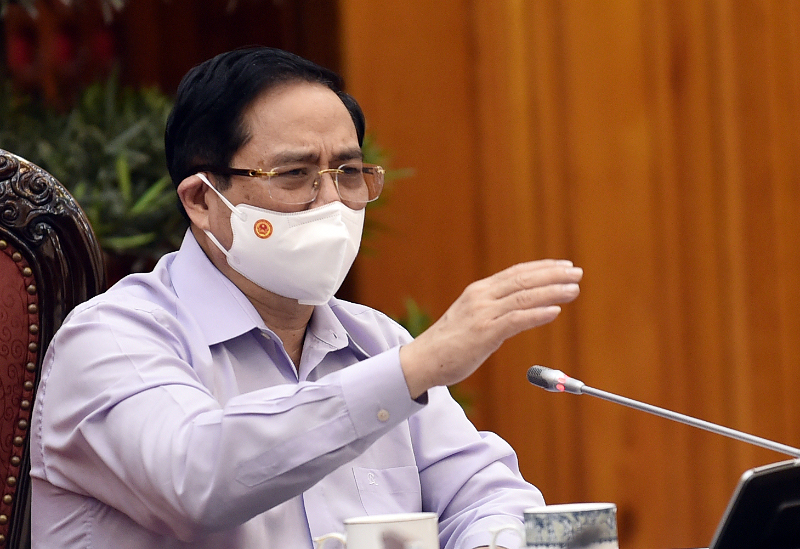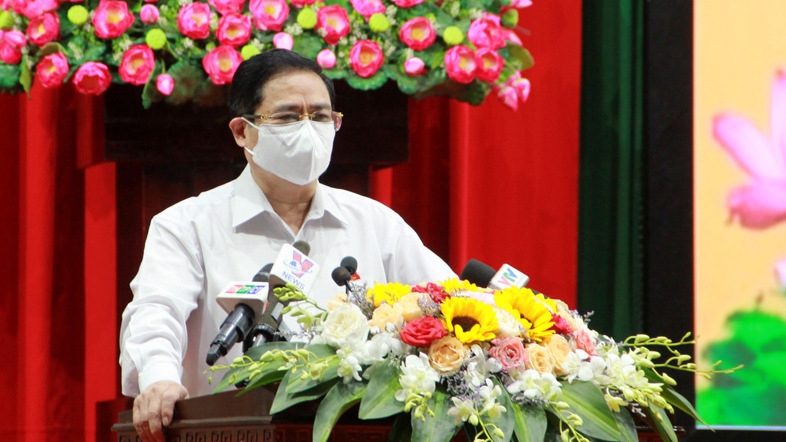Recovery and reform underpin scenarios for post-pandemic growth
(VEN) - The Central Institute for Economic Management (CIEM) under the Ministry of Planning and Investment has outlined three economic growth scenarios for the 2021-2023 period. If breakthroughs in institutional reforms are achieved to improve growth quality, in addition to fiscal and monetary easing, the Vietnamese economy could expand annually by 6.76 percent during the three-year period.

Positive signals
The CIEM in coordination with Aus4Reform - an Australian-funded aid program - announced the findings of a report on making economic recovery and institutional reforms intertwined after Covid-19.
CIEM Director Tran Thi Hong Minh said that in the context of the Covid-19 pandemic with its complex global developments, Vietnam was one of the few nations achieving positive GDP growth in 2020 (2.91 percent). In the first quarter of 2021, the Vietnamese economy grew by 4.48 percent, a relatively good result compared to other countries in the region and elsewhere.
Minh attributed the results to the direction of the government, ministries, departments and localities, as well as determination in implementing the government’s dual task of fighting the pandemic and promoting socioeconomic development.
The CIEM in coordination with the Aus4Reform has drawn up three scenarios for the country’s post-pandemic development in the 2021-2023 period. In the first scenario, Vietnam’s economic growth will reach 5.98 percent in 2021, 6.45 percent in 2022 and 6.61 percent in 2023, yielding an average growth of 6.35 percent per year. In the second scenario with monetary easing, Vietnam’s GDP growth could expand by 6.43 percent in 2021, 6.8 percent in 2022 and 6.83 percent in 2023, reaching an average growth of 6.69 percent per year. In the third scenario, if breakthroughs in institutional reforms are achieved to improve growth quality, in addition to fiscal and monetary easing, the Vietnamese economy could grow by 6.76 percent a year during the 2021-2023 period, including 6.47 percent in 2021, 6.88 percent in 2022 and 6.92 percent in 2023.

The manufacturing and processing sector sees impressive recovery
Recovery, reforms intertwined
Nguyen Anh Duong, head of the CIEM’s General Research Department, said relaxed fiscal and monetary policies could result in higher economic growth and improvements in productivity if combined with institutional reforms. Duong also said this is an effective way to develop the economy in a rapid and sustainable manner in the face of global economic risks and uncertainties.
Regarding the reform process for Vietnam, the country should continue its Covid-19 control and prevention, as well as its efforts to remove bottlenecks facing the business community and workers and promote institutional reforms this year. In 2022, Vietnam should carry out economic recovery measures in tandem with institutional reforms. Solutions to support economic recovery should be withdrawn in 2023, with focus shifting to intensive institutional reforms.
Vietnam should also take advantage of opportunities provided by its recently signed mega free trade agreements, especially the Comprehensive and Progressive Agreement for Trans-Pacific Partnership (CPTPP), the EU-Vietnam Free Trade Agreement (EVFTA), and the Regional Comprehensive Economic Partnership (RCEP). In particular, Vietnam should further promote the digital economy.
Le Dang Doanh, former director of the CIEM, said Vietnam needs to come up with clear roadmaps in order to develop the digital economy after failing to create breakthroughs in the development of the digital economy.











